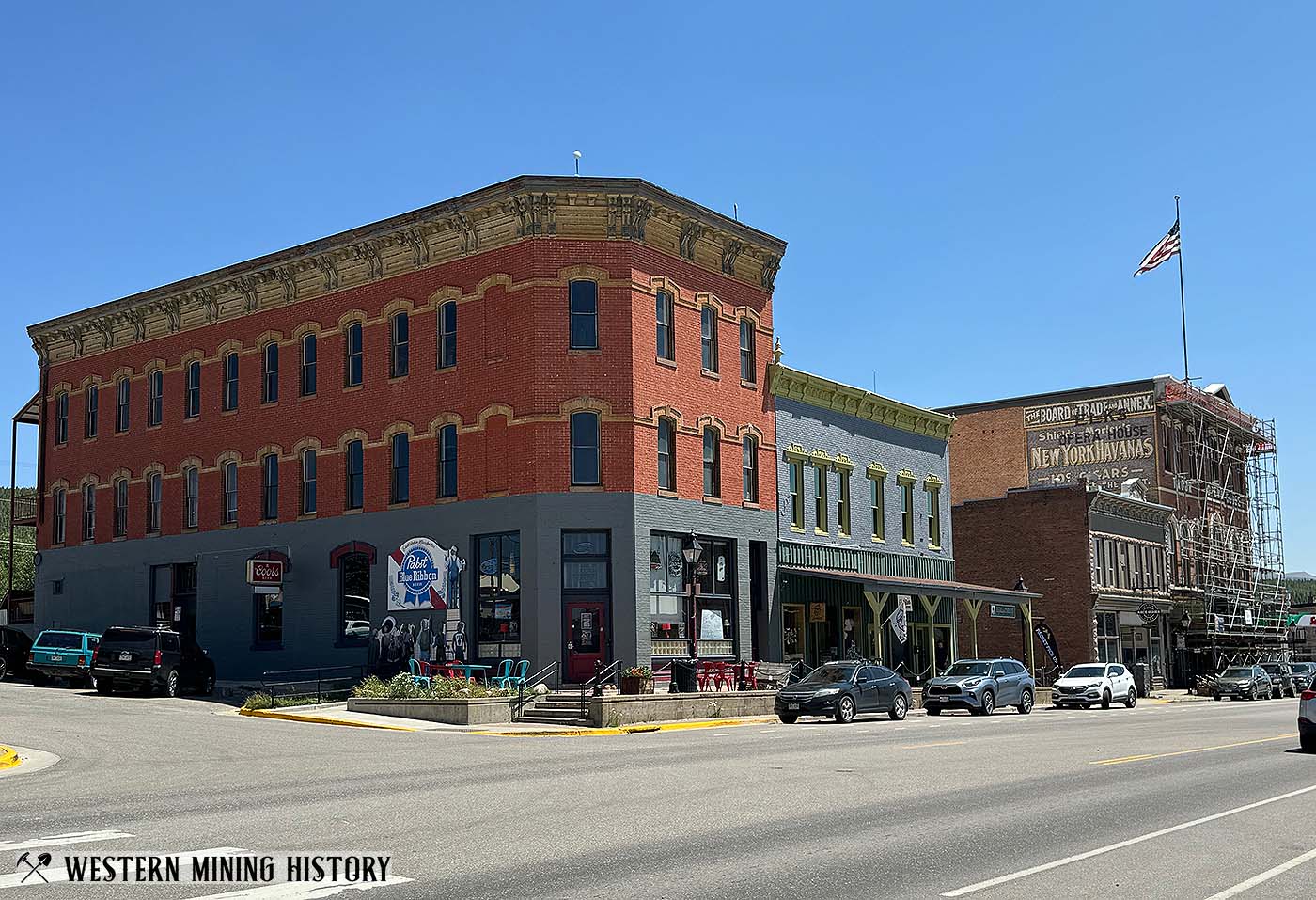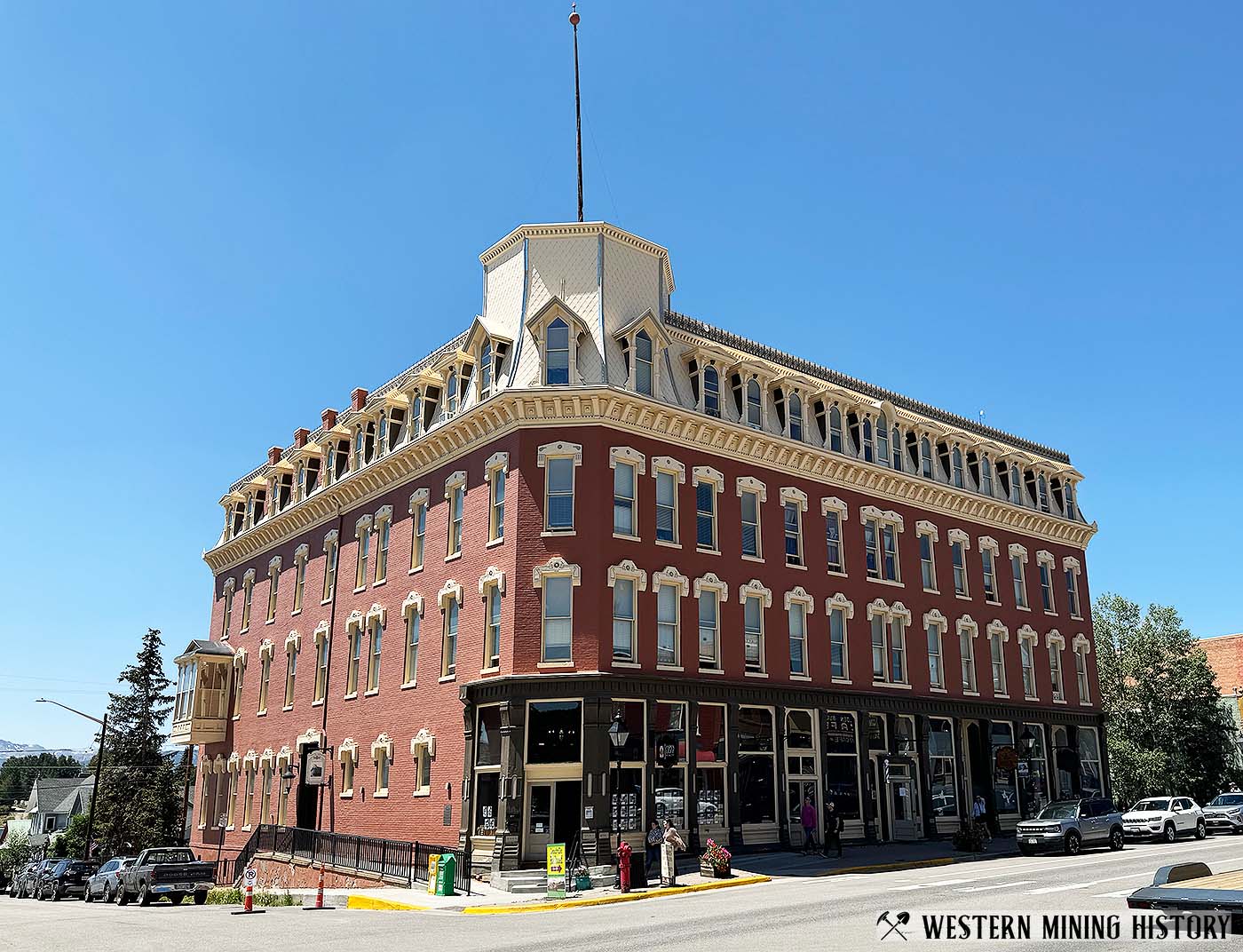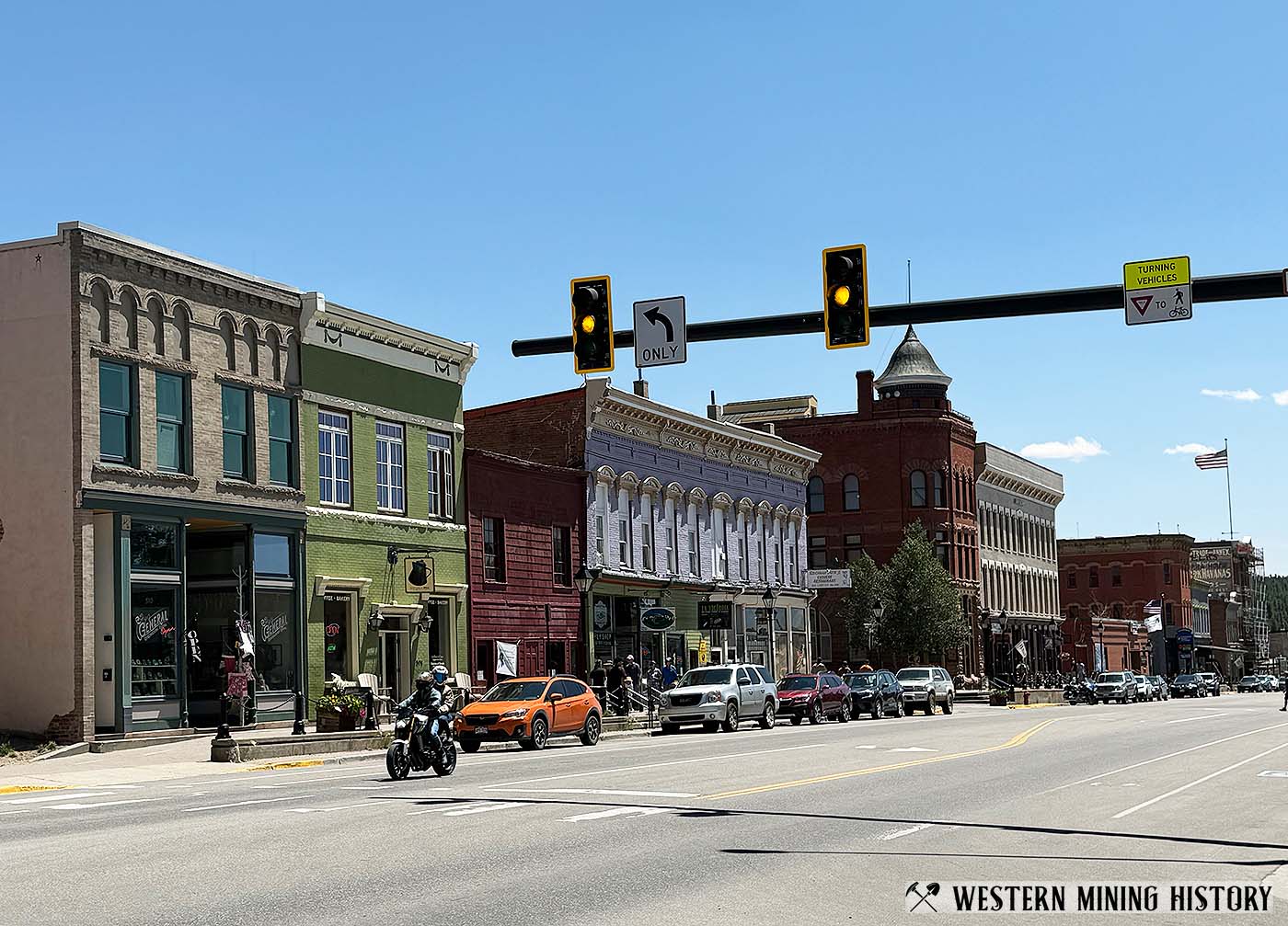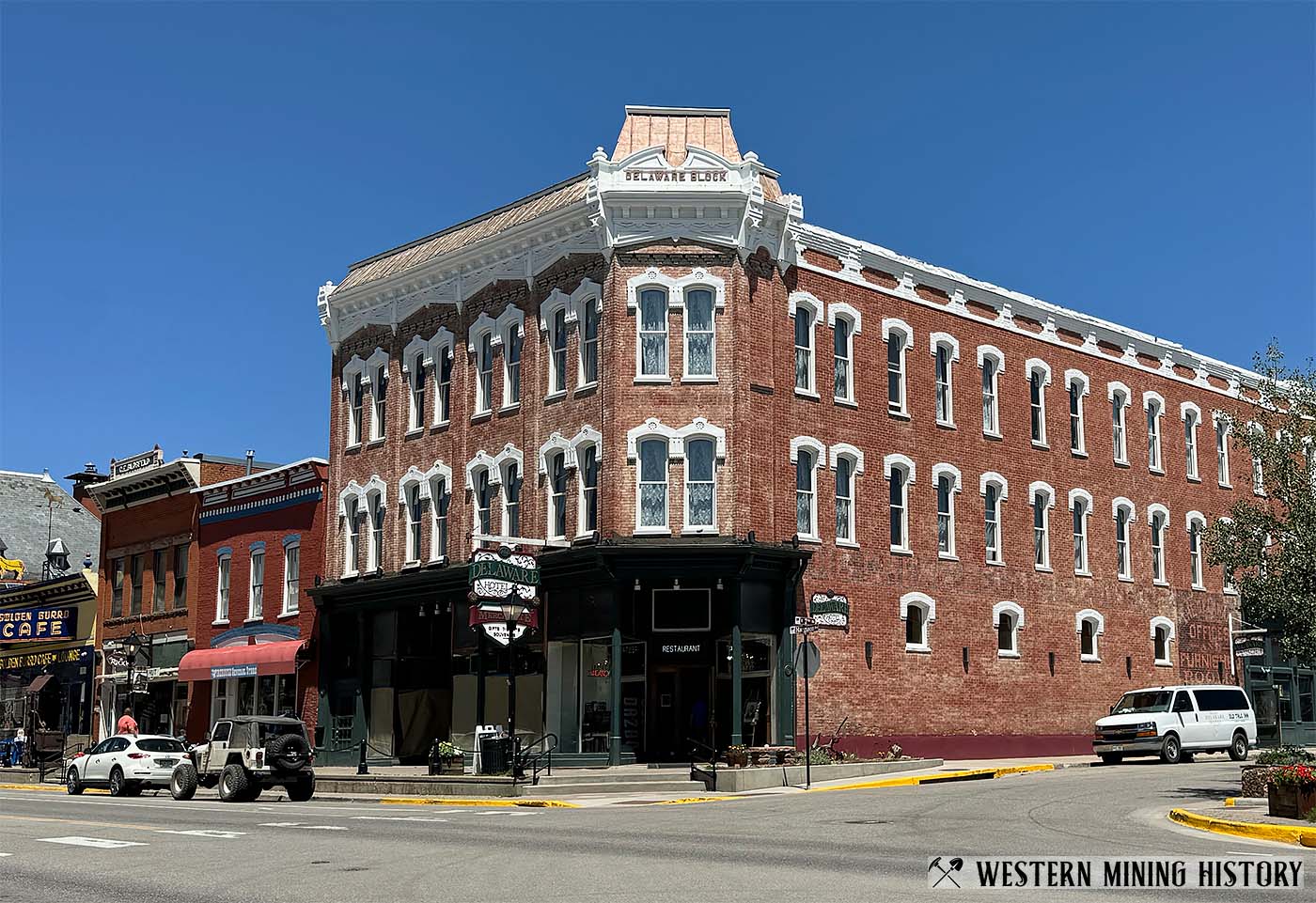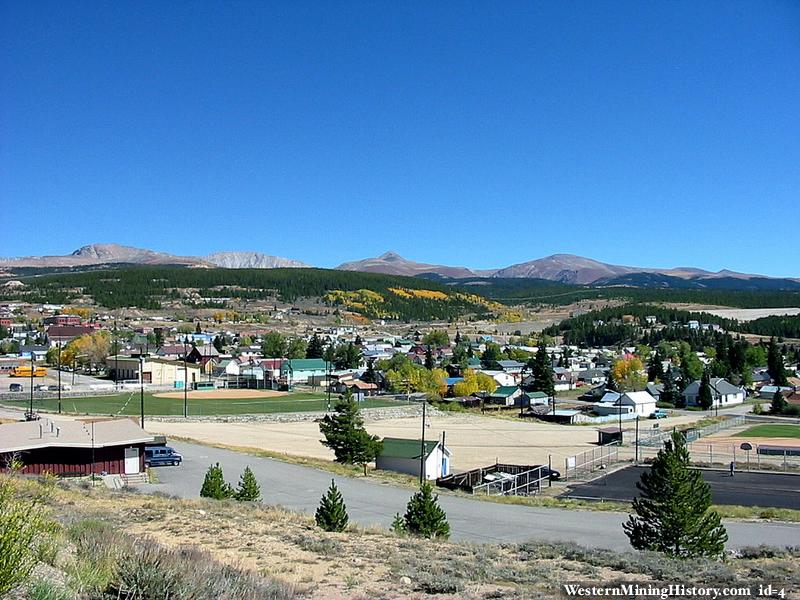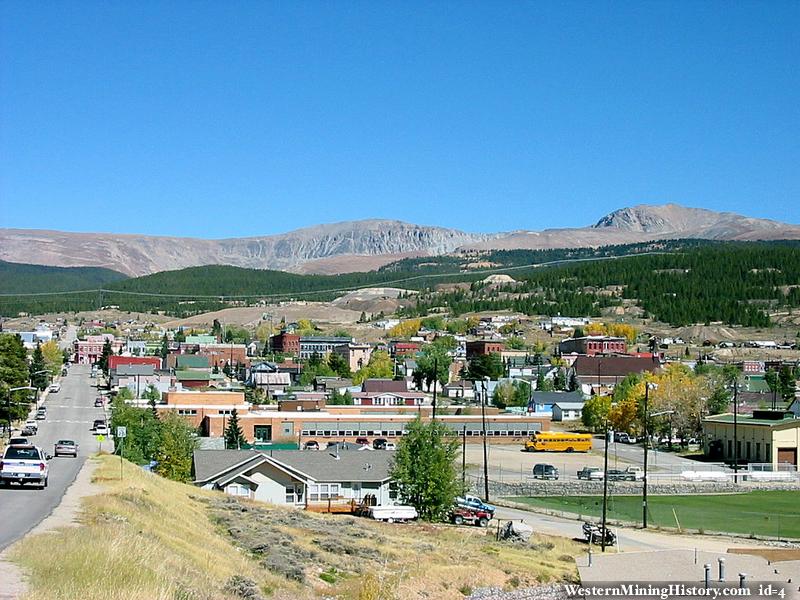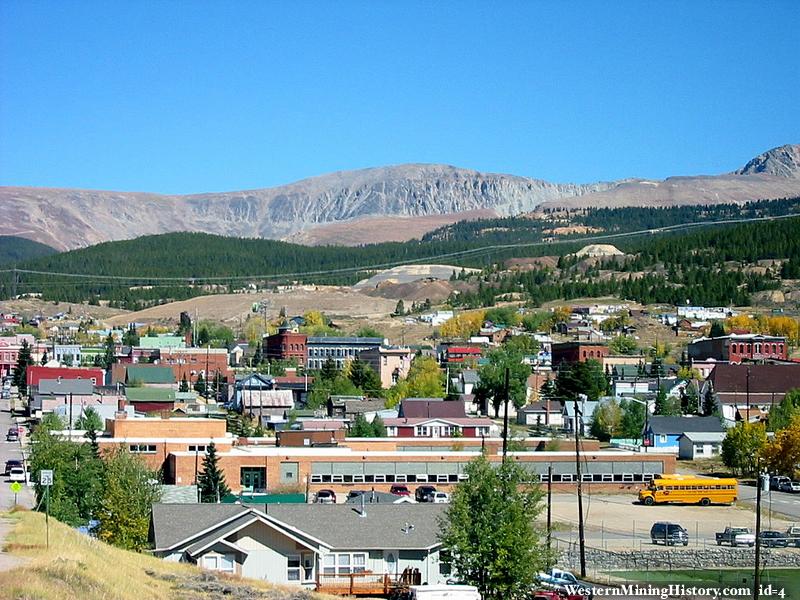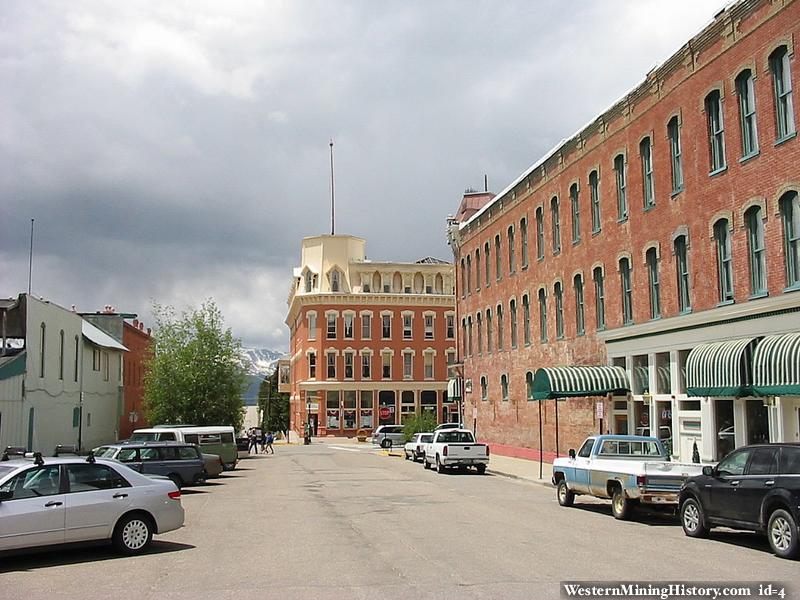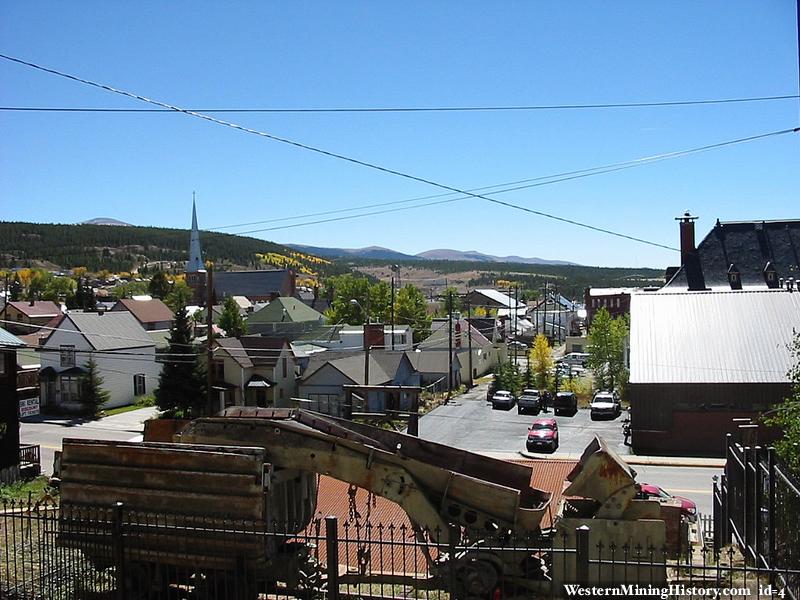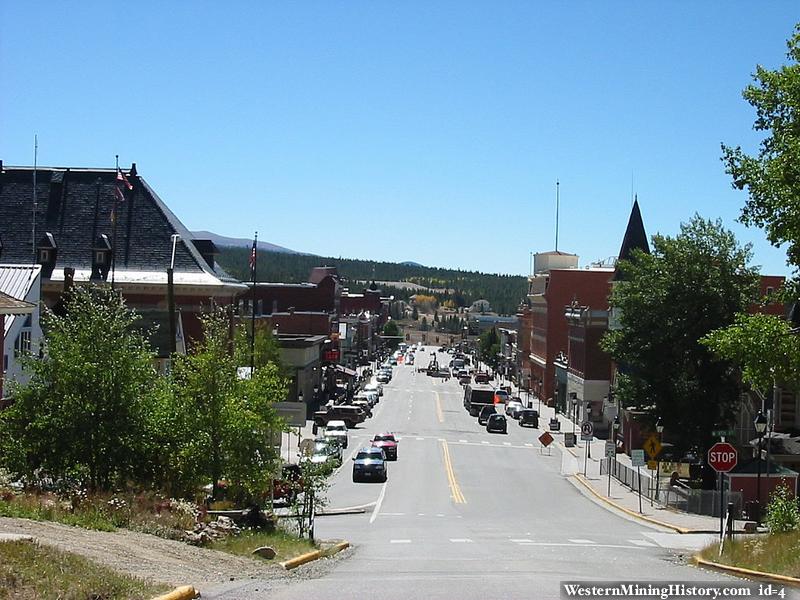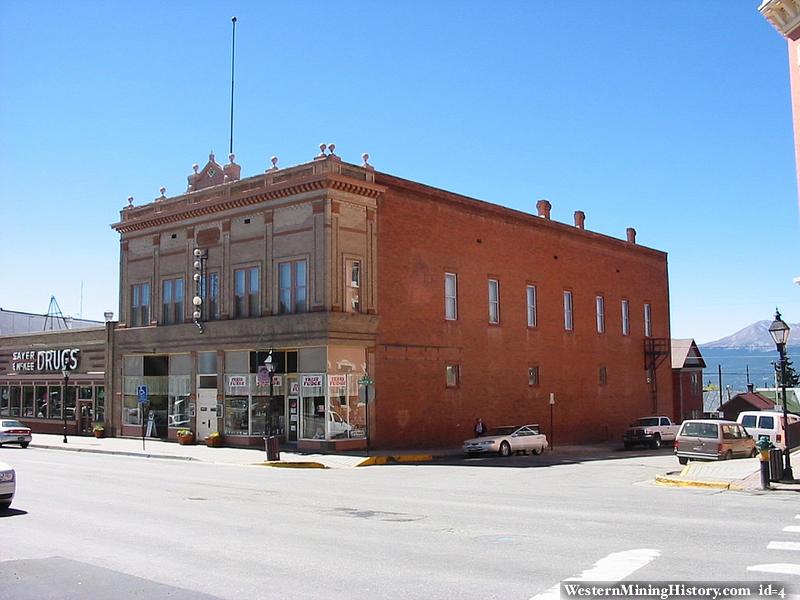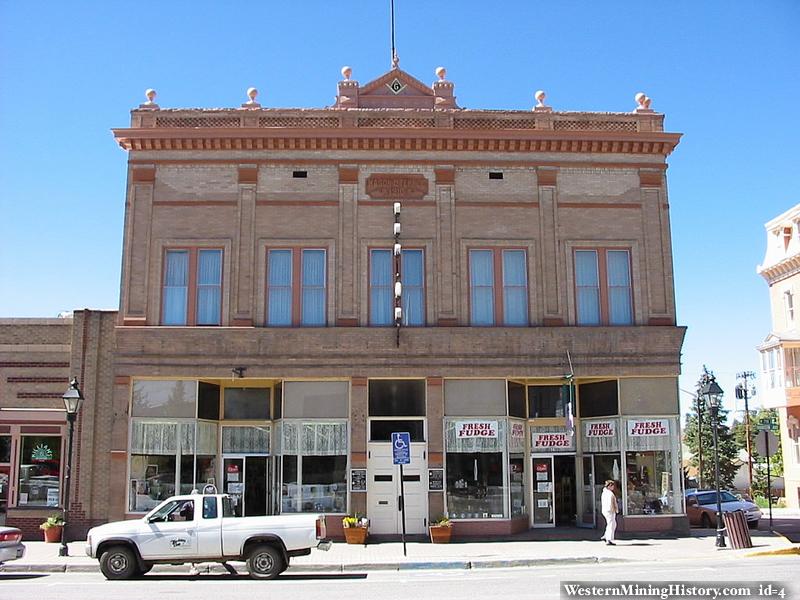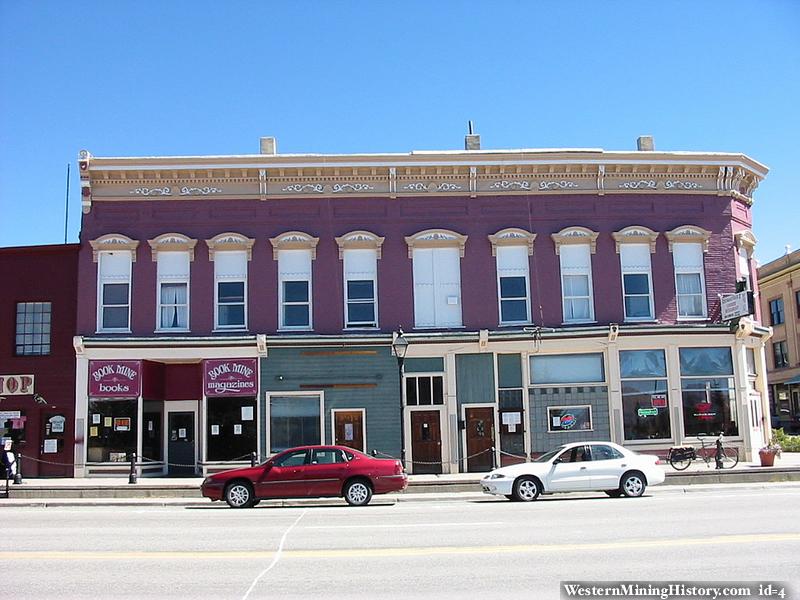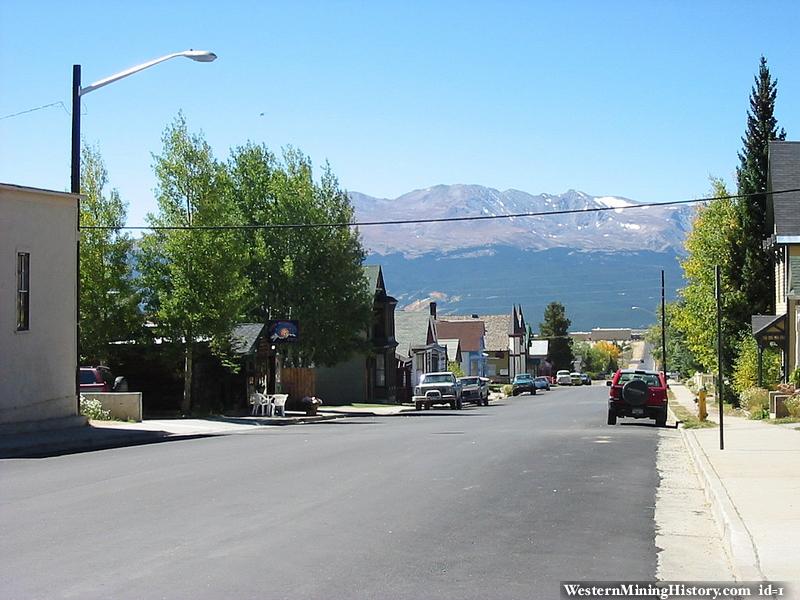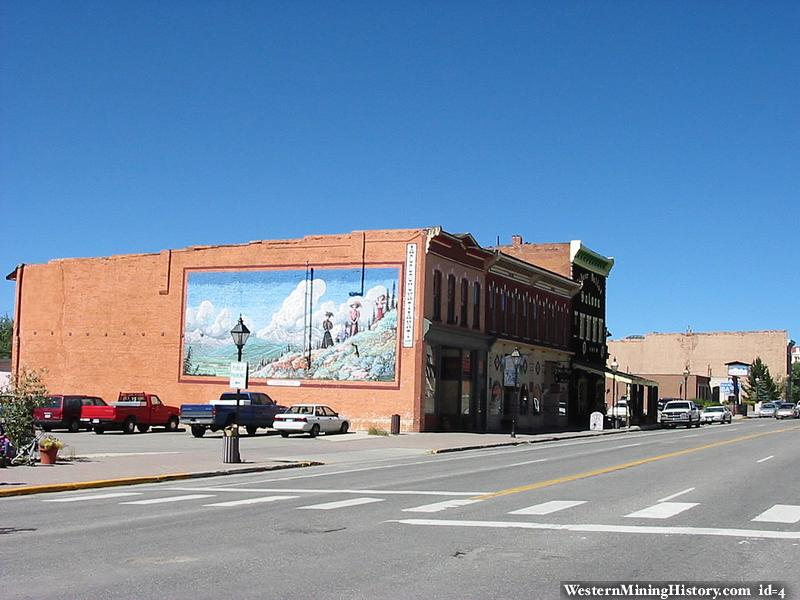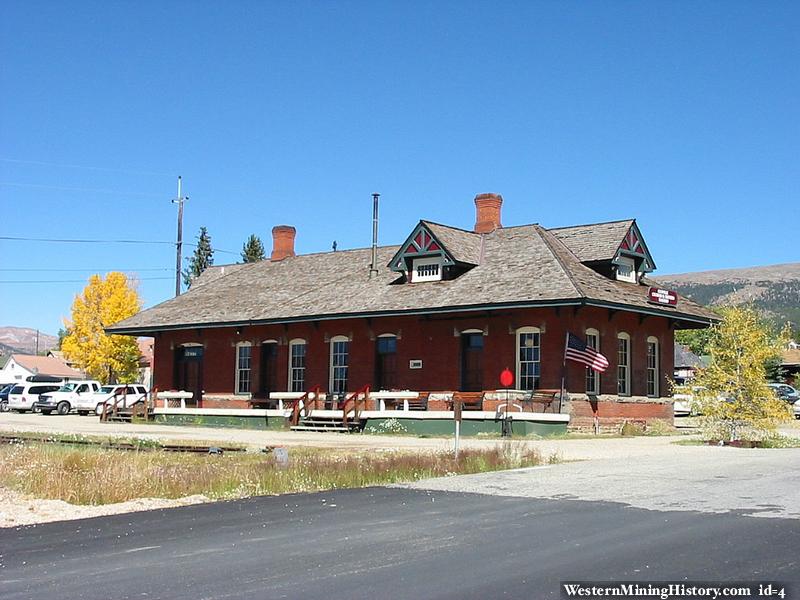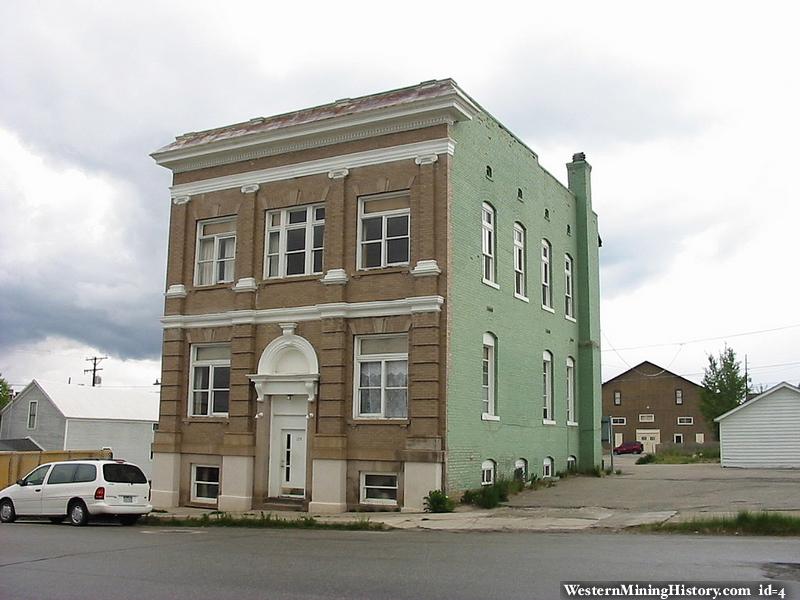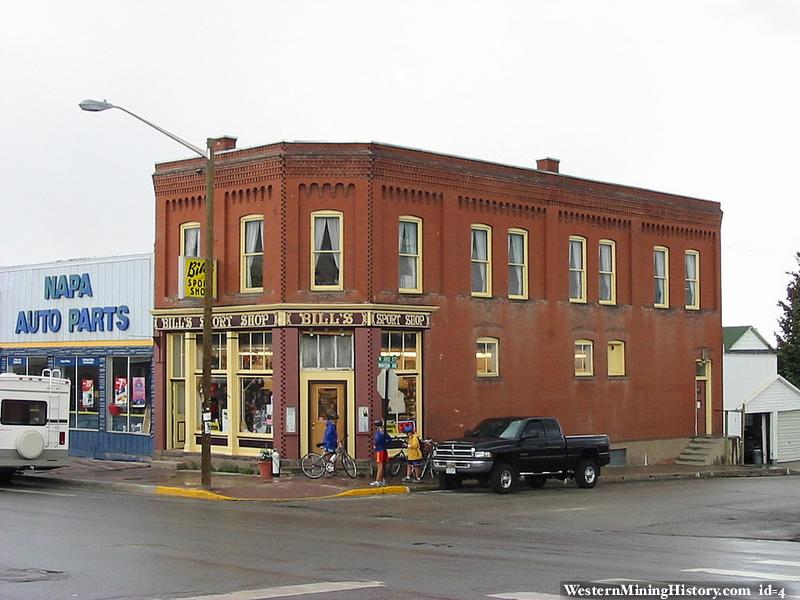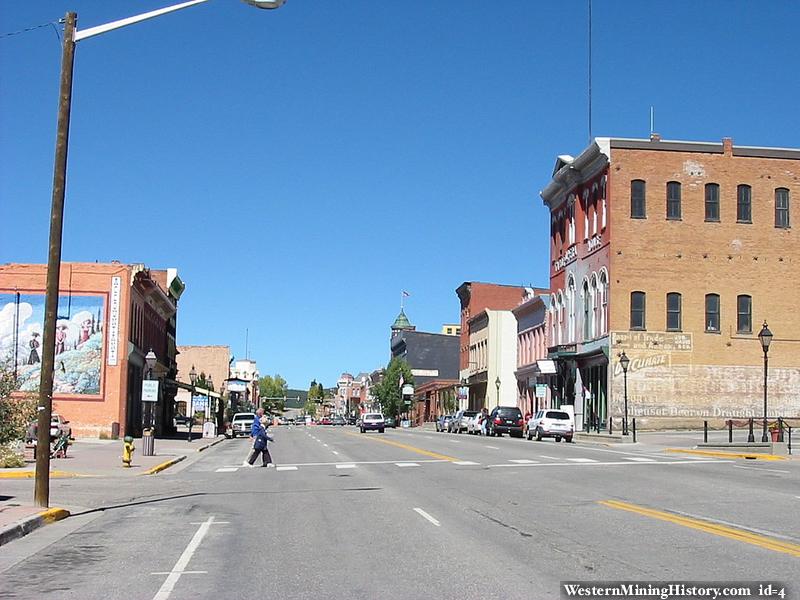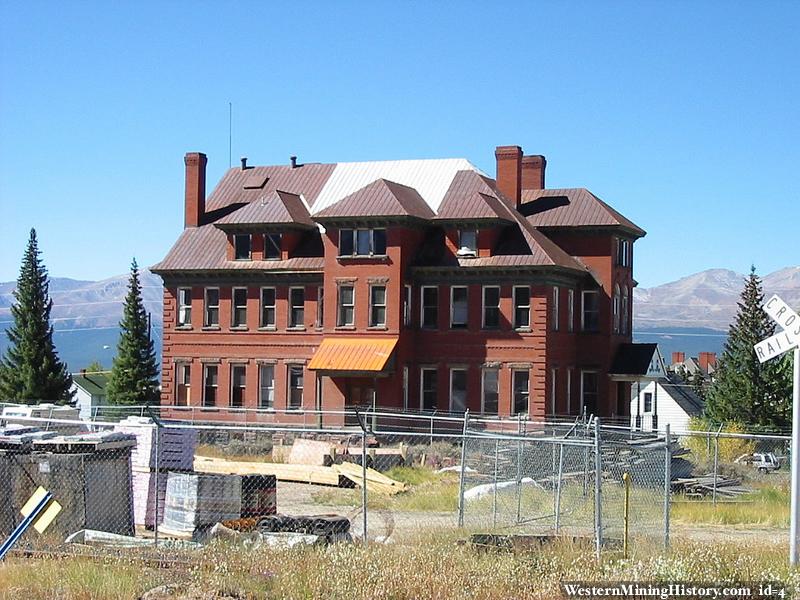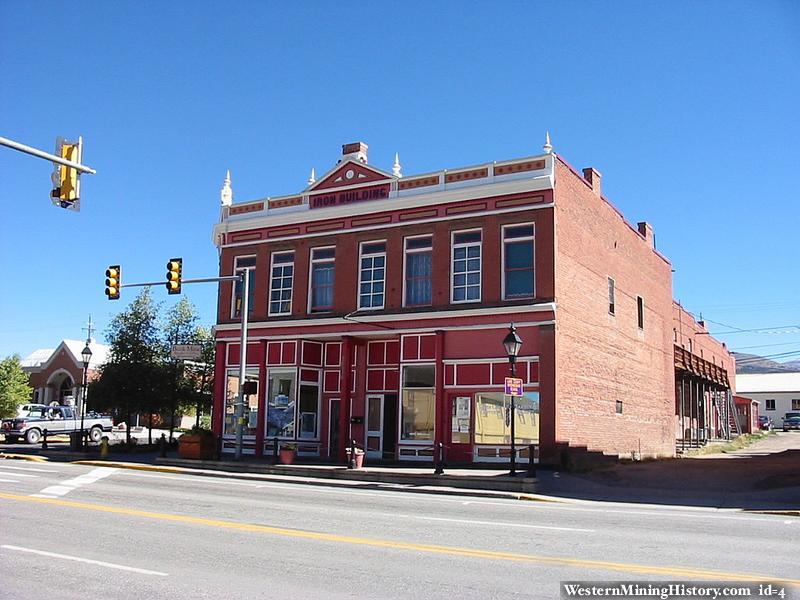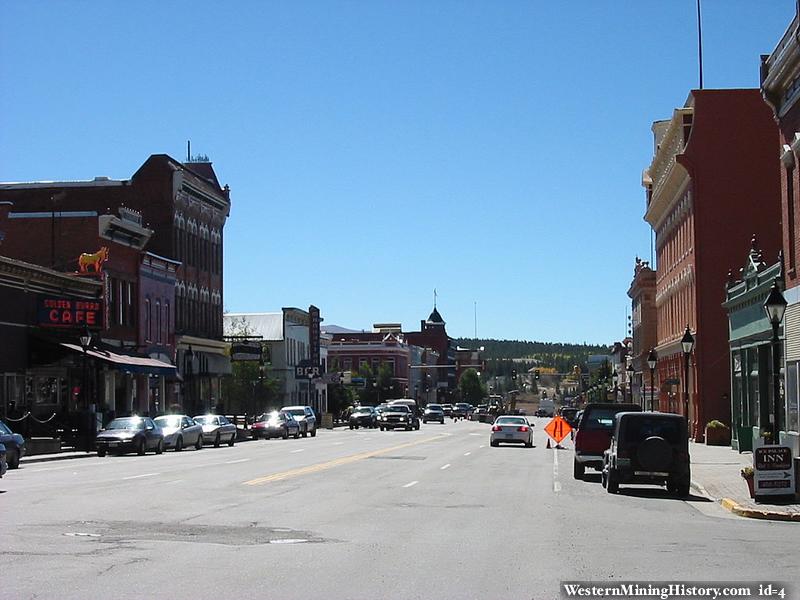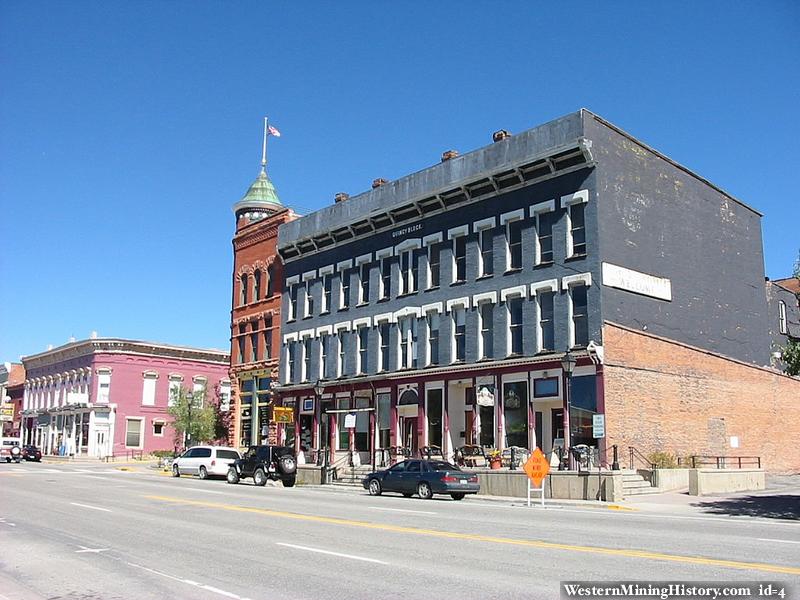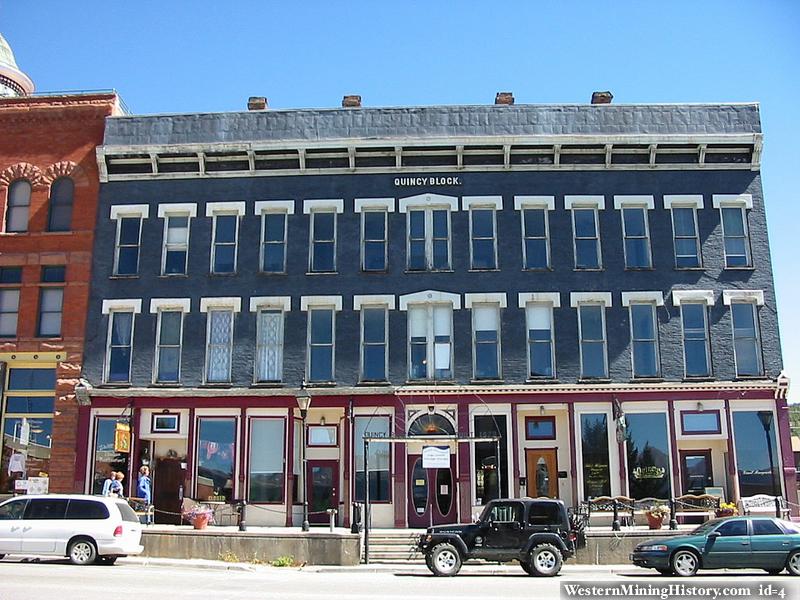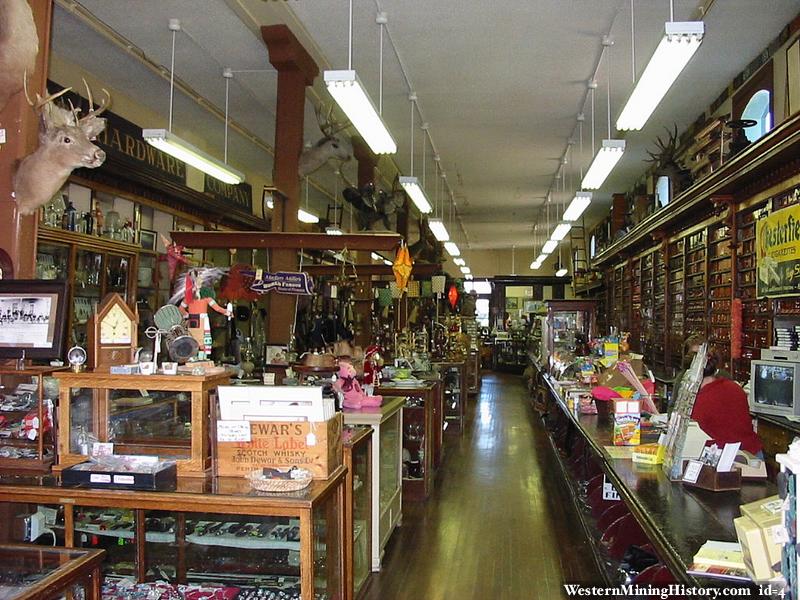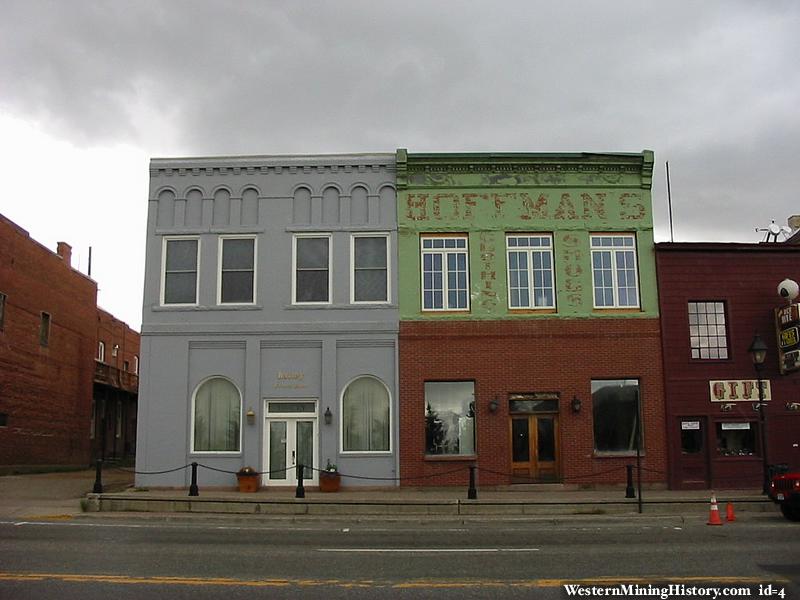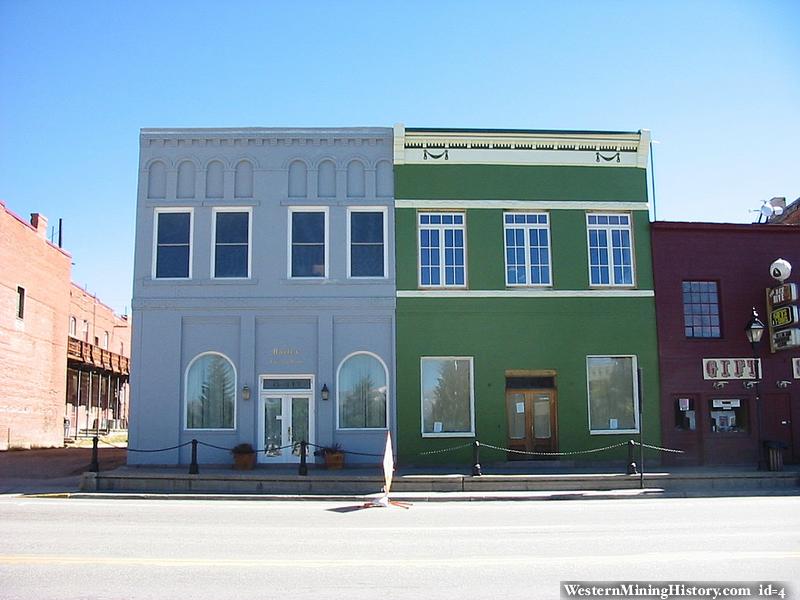Click on an image to get more details or a direct link.
Leadville, Colorado - Delaware Hotel.
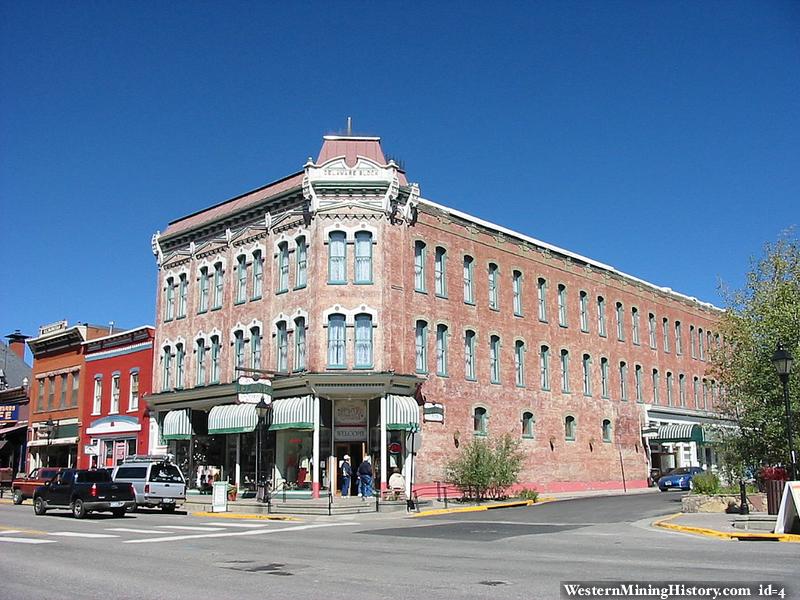
In the mid 1880's three brothers, William F., George F. and John W. Callaway, Denver queens ware merchants, came to Leadville. The brothers established a branch of their business on lower Harrison Avenue. They built the two-story Callaway Block on the northeast corner of Sixth and Harrison (which later burned). In 1886 they erected the Delaware Hotel as a monument to their home state. John Callaway was proprietor. The Delaware Block was completed by October, 1886 at an estimated cost of $60,000. The sidewalk level was designed for stores both in front and on the Seventh Street side. The second and third walk-up floors had fifty handsomely furnished rooms suitable for offices and bedrooms. The building was fitted with steam heat, hot and cold water, gas lights, 6 bathrooms and a few closets.
Delaware architect, George King, came to Leadville in time to take an active part in the building boom that was sweeping the city. King obviously favored the French Mansard design, which until the late 1880's was popular in mining towns. King was also the architect for the plush Tabor Grand Hotel directly across the street.
History courtesy of www.delawarehotel.com
Leadville, Colorado - Tabor Grand Hotel.
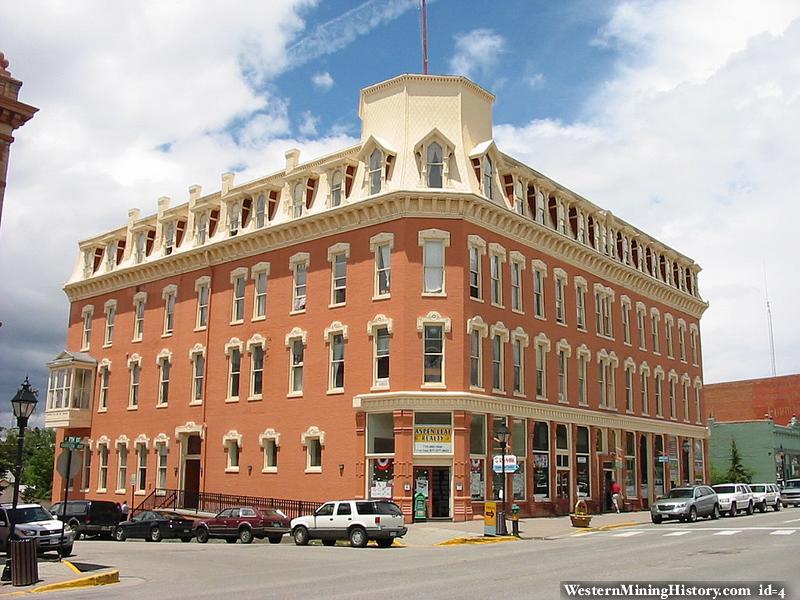
On the northwest corner of 7th and Harrison, sits the Tabor Grand Hotel building. Built during the two year period of 1883 to 1885, this four story brick building was designed by noted architect of the period, George King. The hotel has had many names including the Maxwell, the Kitchen, and the Vendome. The newspaper of the day carried the following quote when the Hotel opened: Leadville now has a hotel which in elegance of its appointments is second to none in the west and in which citizens and tourists will find all the luxuries and conveniences of the older cities." The building was renovated and re-opened in 1992 with shops on the lower floor and apartments on the upper floors.*
*This text is from the walking tour of Leadville at http://www.leadville.com/walktour/ - a great resource for local information.
Leadville, Colorado - Heritage Museum.
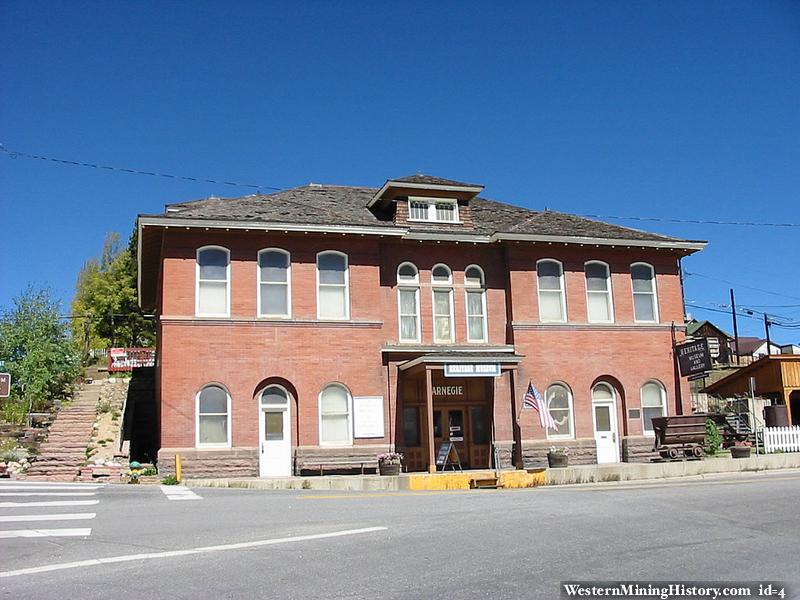
The brick building at the northeast corner of Harrison and 9th is the Heritage Museum. Built as the Carnegie Library, it opened in 1904, two years after the cornerstone date of 1902. It served as the library for the area until 1971 when it was turned into a local museum. It is open during the summer months and houses a scale model of the Leadville Ice Palace, an excellent display of 10th Mountain Division memorabilia and various Leadville artifacts.*
*This text is from the walking tour of Leadville at http://www.leadville.com/walktour/ - a great resource for local information.
Leadville, Colorado.
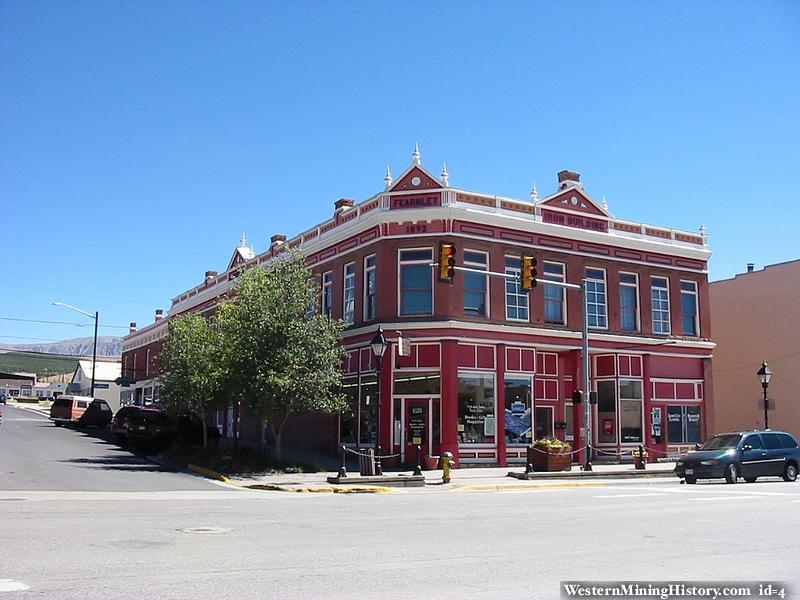
Located on the southeast corner of 6th and Harrison is the Iron Building with a corner pediment with the name of Fearnley. It was built in 1893 amidst the collapse of the silver market. It is thought the name "Iron Building" either comes from the use of iron on the building or from the fact that the humble iron ore found in the Leadville mining district might be a saving grace after the fall of silver.
*This text is from the walking tour of Leadville at http://www.leadville.com/walktour/ - a great resource for local information.
Leadville, Colorado.
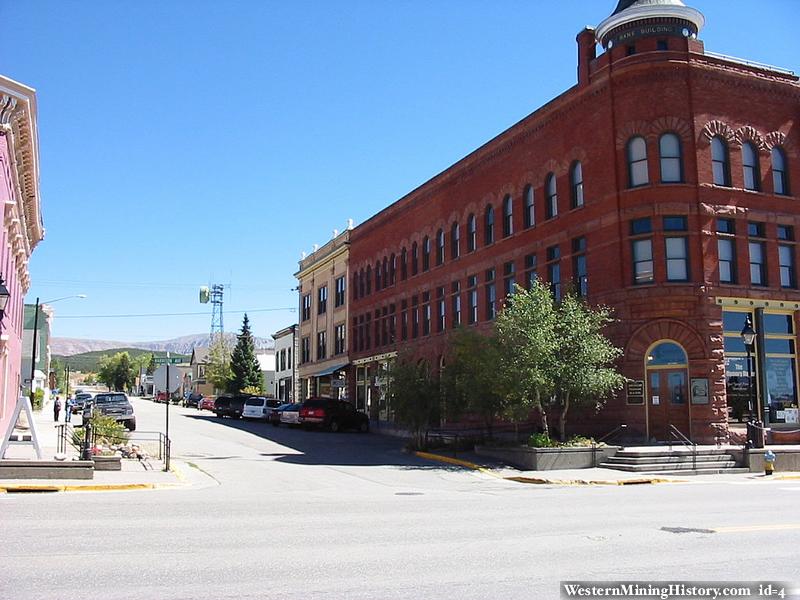
Located on the southeast corner of 5th and Harrison is the three story brick and sandstone bank building built in the Romanesque style. The building is 25 feet wide and 110 feet deep with a 17 foot tower of red sandstone. The corner tower is topped with a bell shaped metal painted dome. The building's first occupant in 1892 was the American National Bank.
*This text is from the walking tour of Leadville at http://www.leadville.com/walktour/ - a great resource for local information.
Leadville, Colorado.
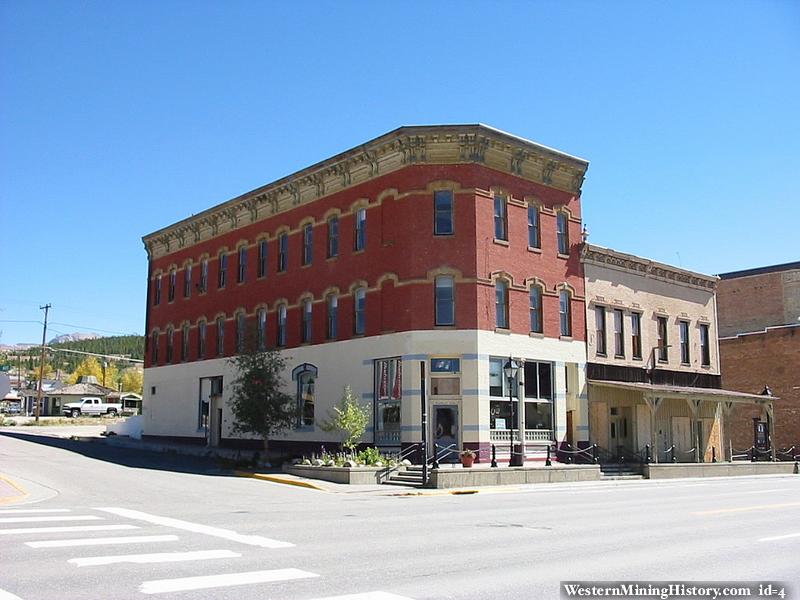
The southeast corner of 4th and Harrison is currently the Scarlet Lounge. The building was built in 1887 as the Breene Block named from Lt. Governor and State Treasurer of Colorado, Peter W. Breene, who provided the funding. Initially the first floor was occupied by Adolph Hirsch's liquor store which did probably the largest volume of business in Western Colorado. His sales amounted to nearly $300,000 and his freight bill was $60,000 in 1888!
*This text is from the walking tour of Leadville at http://www.leadville.com/walktour/ - a great resource for local information.
Leadville, Colorado.
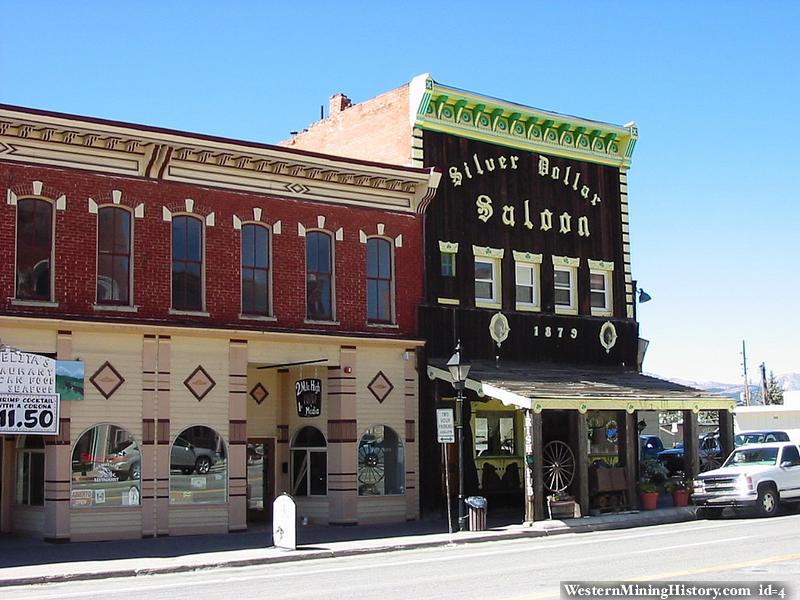
The saloon in the middle of this block is one of Leadville's oldest establishments. Opening in 1883 in the Clipper Building, it was originally the Board of Trade Saloon. It has been the Silver Dollar since 1935. The majestic antique back bar made by the Brunswick Company and the original tile floor remain in use today.
*This text is from the walking tour of Leadville at http://www.leadville.com/walktour/ - a great resource for local information.
Leadville, Colorado - City Hall.
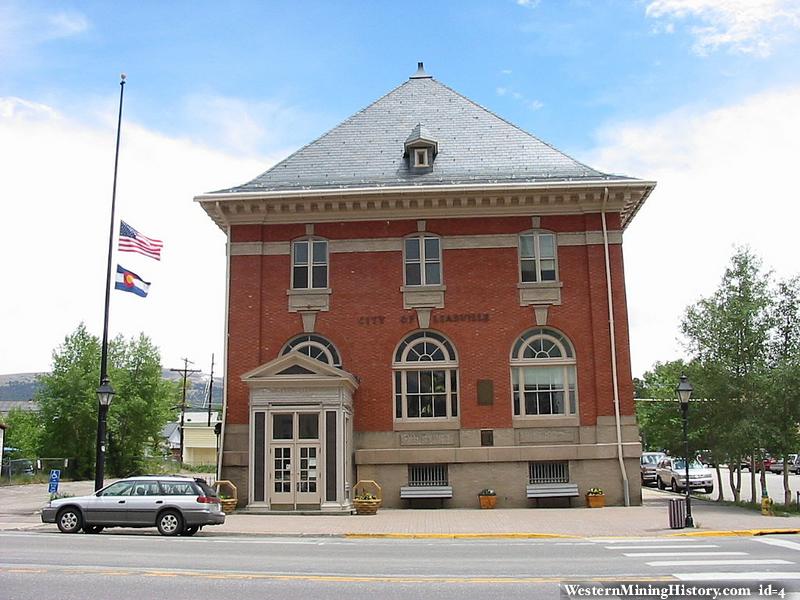
Formerly the Leadville post office. If you are in town, a stroll through the building is worth while. June, 2004.
Leadville, Colorado.
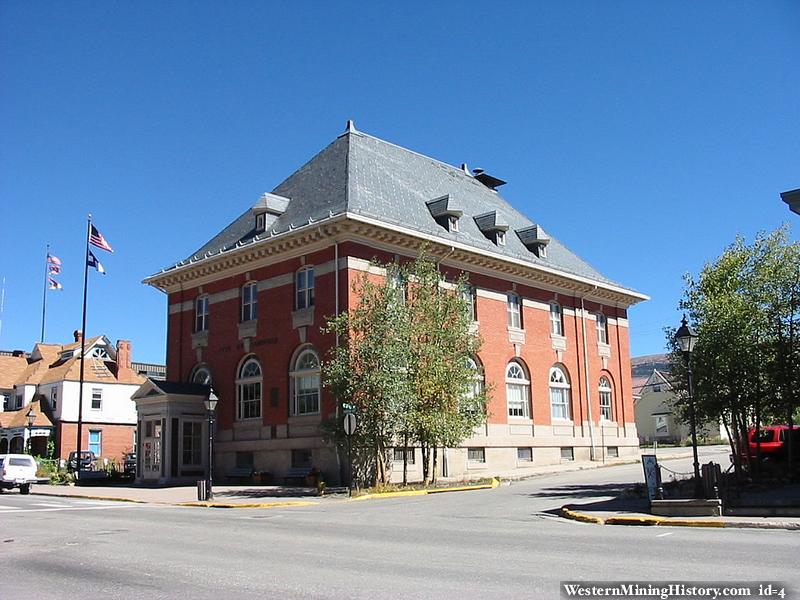
Formerly the Leadville post office. If you are in town, a stroll through the building is worth while. September, 2004.
Leadville, Colorado - National Mining Museum.
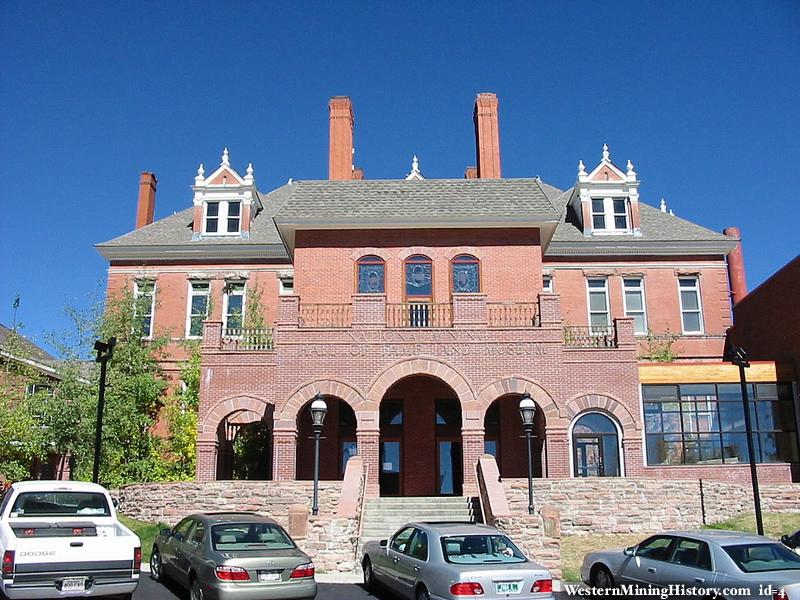
Formerly the Leadville high school, this building was constructed in 1900.
Leadville, Colorado.
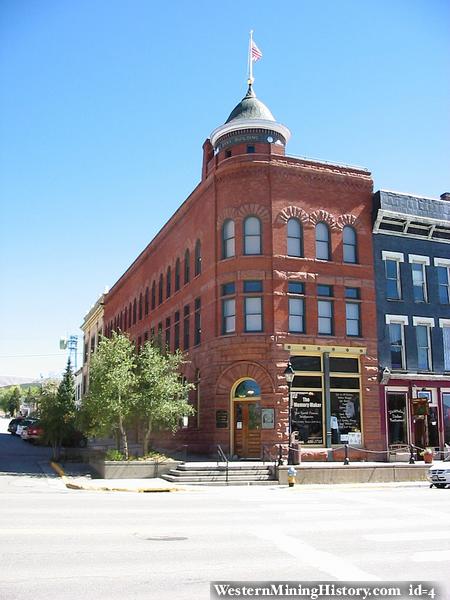
Located on the southeast corner of 5th and Harrison is the three story brick and sandstone bank building built in the Romanesque style. The building is 25 feet wide and 110 feet deep with a 17 foot tower of red sandstone. The corner tower is topped with a bell shaped metal painted dome. The building's first occupant in 1892 was the American National Bank.
*This text is from the walking tour of Leadville at http://www.leadville.com/walktour/ - a great resource for local information.
Leadville, Colorado.
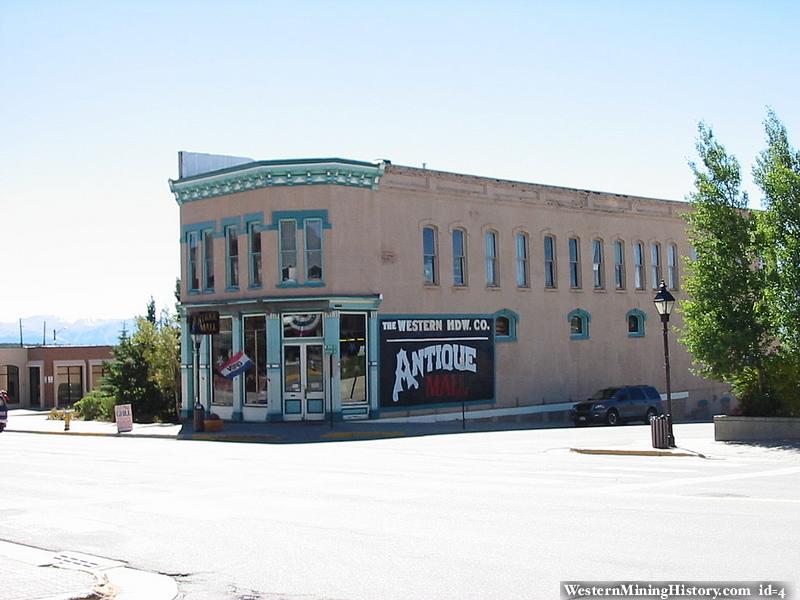
On the southwest corner of 5th and Harrison sits the Western Hardware Building. It was opened in August of 1881 as the Manville and McCarthy Hardware. The store operated as a hardware store for over 100 years. It remains a perfect intact example of 19th century commercial architecture. A corner entrance with tall doors leads you inside where many of the original store fixtures including a long counter and wall of drawers are on display.
*This text is from the walking tour of Leadville at http://www.leadville.com/walktour/ - a great resource for local information.
Leadville, Colorado - Tabor Opera House.
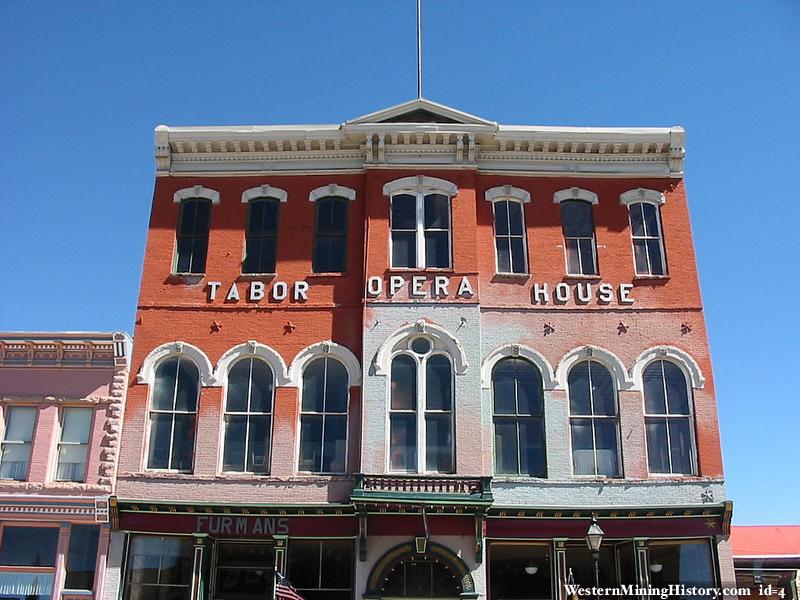
The Tabor Opera House was built in 1879 by Horace Austin Warner Tabor, one of Colorado's most well known mining magnates. It was one of the most costly and most substantially-built structures in Colorado history. The construction materials used to build the Tabor Opera House were not available in Leadville, so HAW Tabor ordered that they be brought up by wagons... a tedious task. Nevertheless, the Tabor was completed in only 100 days from the date of ground-breaking which was a record time.
The massive 3-story opera house was constructed of stone, brick and iron, and trimmed with Portland cement. It's solid brick walls stand 16 inches thick! The color scheme used was red, gold, white and sky-blue, with the blending beauty of everything fully revealed by 72 jets of brightly burning gas lights. This substantial construction has weathered the test of time, and stands today as a proud monument to Colorado history.
Text from http://www.taboroperahouse.net/
Leadville, Colorado - Tabor Opera House.
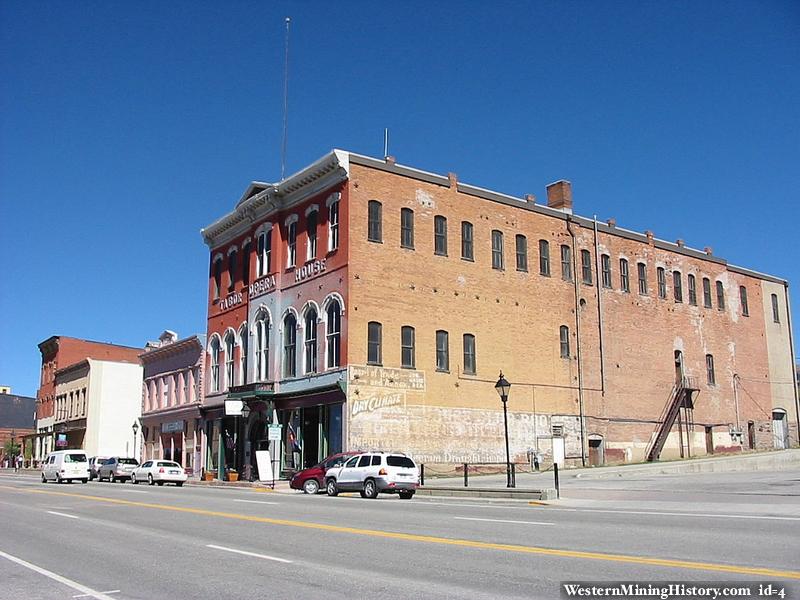
The Tabor Opera House was built in 1879 by Horace Austin Warner Tabor, one of Colorado's most well known mining magnates. It was one of the most costly and most substantially-built structures in Colorado history. The construction materials used to build the Tabor Opera House were not available in Leadville, so HAW Tabor ordered that they be brought up by wagons... a tedious task. Nevertheless, the Tabor was completed in only 100 days from the date of ground-breaking which was a record time.
The massive 3-story opera house was constructed of stone, brick and iron, and trimmed with Portland cement. It's solid brick walls stand 16 inches thick! The color scheme used was red, gold, white and sky-blue, with the blending beauty of everything fully revealed by 72 jets of brightly burning gas lights. This substantial construction has weathered the test of time, and stands today as a proud monument to Colorado history.
Text from http://www.taboroperahouse.net/
Leadville, Colorado - shaker concentrating table.
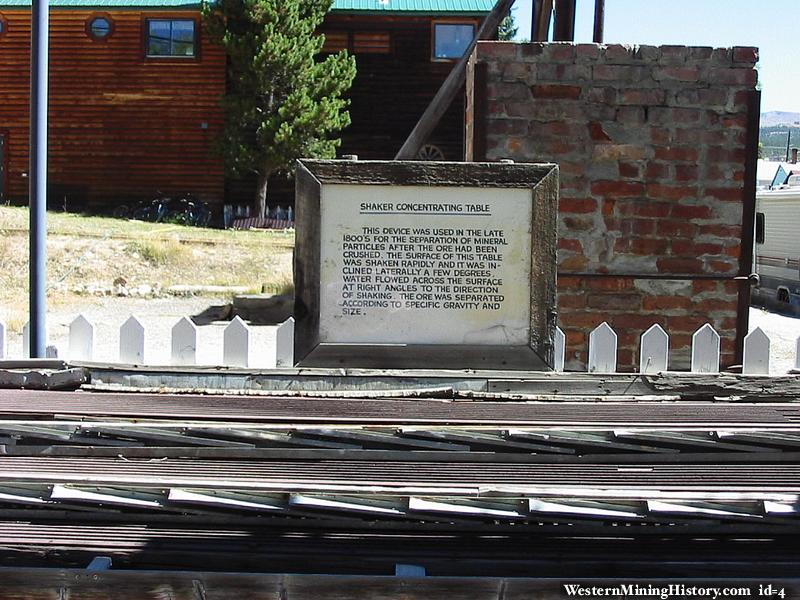
Sign says:
This device was used in the late 1800's for the separation of mineral particles after the ore had been crushed. The surface of this table was shaken rapidly and it was inclined laterally a few degrees. Water flowed across the surface at right angles to the direction of shaking. The ore was separated according to specific gravity and size.
Leadville, Colorado - shaker concentrating table.
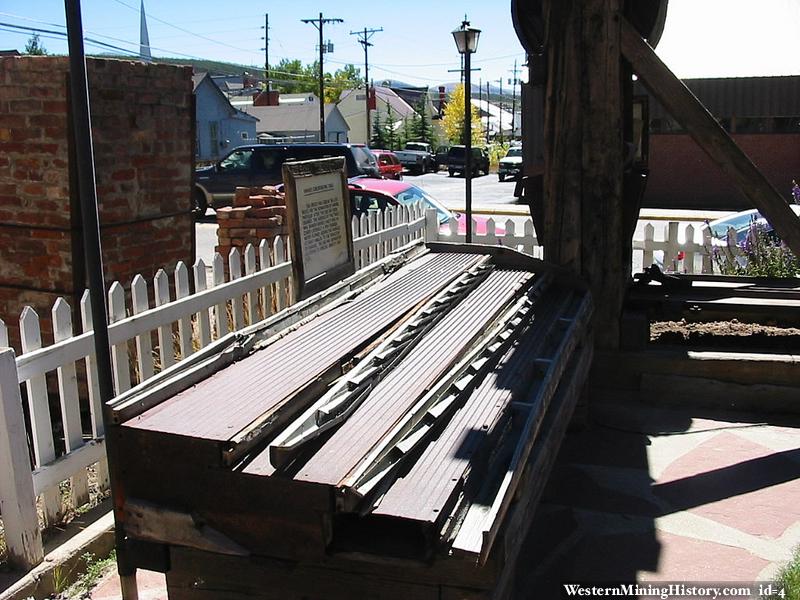
Sign says:
This device was used in the late 1800's for the separation of mineral particles after the ore had been crushed. The surface of this table was shaken rapidly and it was inclined laterally a few degrees. Water flowed across the surface at right angles to the direction of shaking. The ore was separated according to specific gravity and size.
